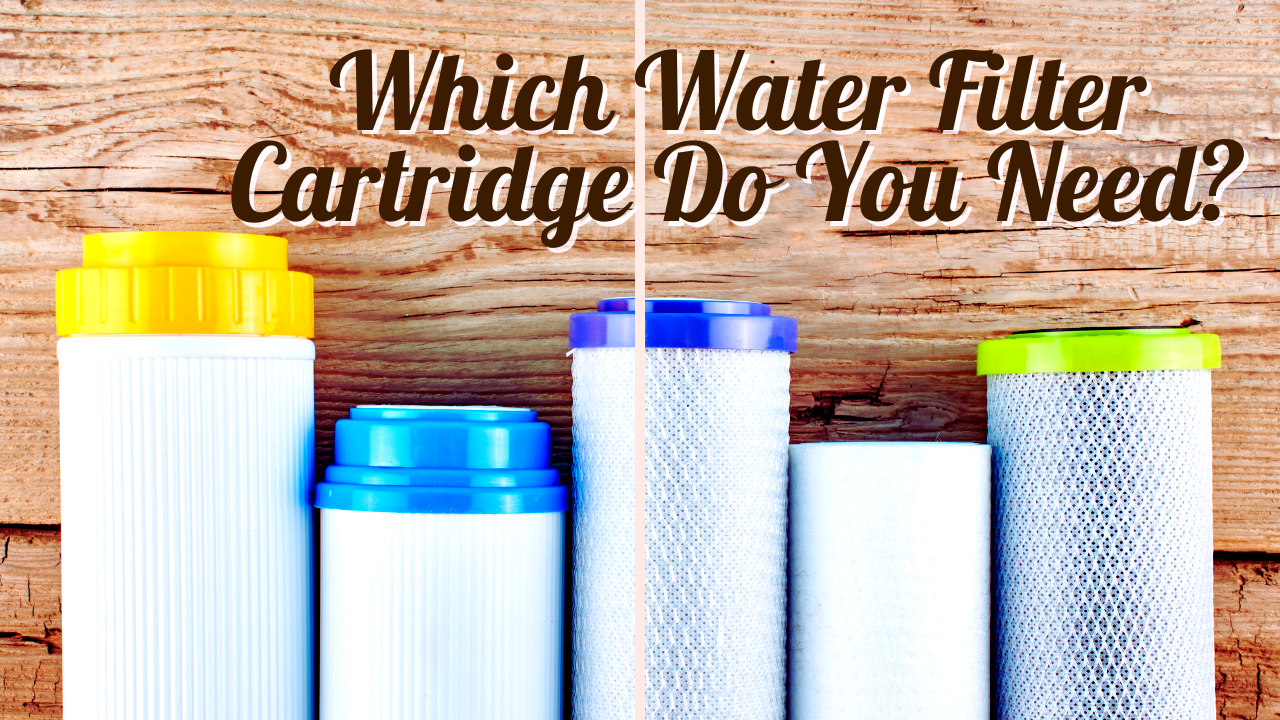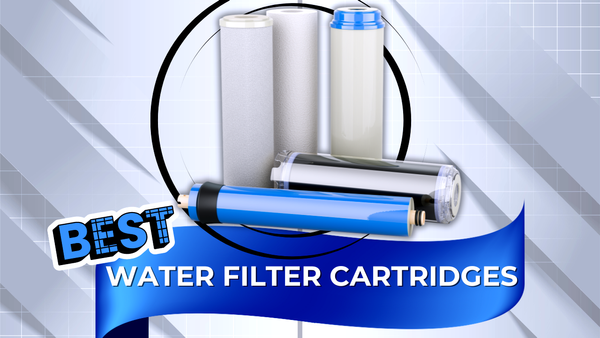Key Takeaways:
- Understanding the different types of water filter cartridges is crucial for selecting the right one for your needs.
- Each filter cartridge type is designed to remove specific contaminants and improve water quality.
- Regular maintenance and replacement of filter cartridges ensure optimal performance and clean water.
Choosing the correct water filter cartridge can feel like finding a needle in a haystack. With so many options available, it's easy to get overwhelmed. But don't worry; we're here to help you navigate the maze of filter cartridges and find the perfect fit for your water filtration system.
Filter cartridges are the heart of any water filtration system. They are designed to remove contaminants and improve the quality of your water. However, not all filter cartridges are created equal. Different cartridges are designed to tackle different water problems, so knowing what you're dealing with is essential.
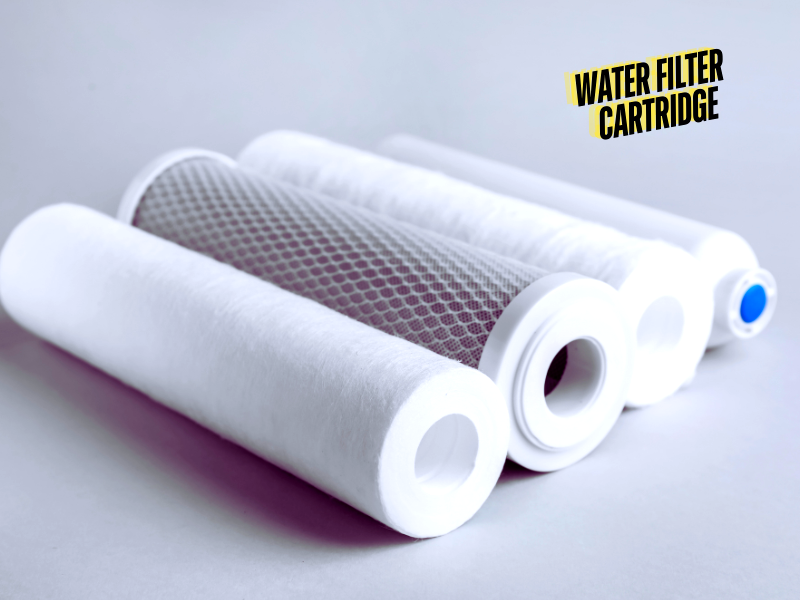
Types of Filter Cartridges
Sediment Filters
Sediment filters are the first line of defense in a water filtration system. They are designed to remove larger particles like sand, silt, and rust from your water. These filters are typically made from pleated polyester or polypropylene and come in various micron ratings. A sediment cartridge filter, in particular, physically separates contaminants like dirt and rust, enhancing overall filtration efficiency by removing larger particles before they can affect more delicate filtering processes.
Carbon Block Filters
Carbon block filters, also known as carbon cartridges, are highly effective at removing chlorine, volatile organic compounds (VOCs), and other chemical contaminants. They are made from compressed activated carbon and have a large surface area, which allows them to adsorb a wide range of contaminants.
Granular Activated Carbon Filters
Granular activated carbon (GAC) filters are similar to carbon block filters but use loose carbon granules instead of a solid block. These filters improve taste and odor and remove chlorine and other organic compounds.
Reverse Osmosis Systems
Reverse osmosis (RO) systems use a semi-permeable membrane to remove many contaminants, including heavy metals, fluoride, and nitrates. To ensure the highest water quality, RO systems typically include multiple stages of filtration, including sediment and carbon filters.
Pleated Filters
Pleated filters are made from pleated polyester or cellulose are designed to capture larger particles and have a high dirt-holding capacity. They are often used as pre-filters in a whole-house filtration system.
Depth Filters
Depth filter cartridges are designed to capture contaminants throughout the entire thickness of the filter material. These filters, typically made from polypropylene or cellulose, are ideal for removing sediment and other larger particles.
Surface Filters
Surface filter cartridges capture contaminants on the surface of the filter material. These filters are typically made from pleated polyester or polypropylene and are used in applications where high flow rates and low-pressure drops are required.
Catalytic Carbon Filters
Catalytic carbon filters are designed to remove chlorine, chloramines, and other chemical contaminants. These filters use a special type of activated carbon that has been treated to enhance its catalytic properties.
Activated Alumina Filters
Activated alumina filters are used to remove fluoride, arsenic, and other specific contaminants from water. These filters use a porous form of aluminum oxide that adsorbs contaminants as water passes through.
Kinetic Degradation Fluxion (KDF) Filters
KDF filters combine copper and zinc to remove chlorine, heavy metals, and other contaminants. These filters are often used in conjunction with different types of filters to enhance contaminant removal.
Choosing the Right Filter Cartridge
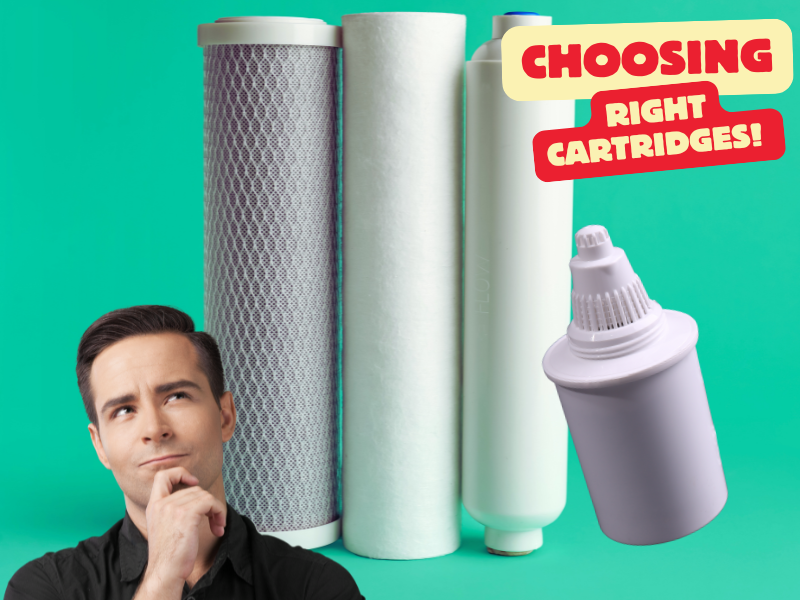
Water Quality
The first step in choosing the right filter cartridge is to understand your water quality. Conduct a water test to identify the specific contaminants present in your water. This will help you determine which type of filter cartridge is best suited for your needs.
Contaminant Removal
Cartridge filters are designed to remove different contaminants, and various types are available to address specific needs. For example, if your water has high levels of chlorine, a carbon block filter would be an excellent choice. If you’re dealing with heavy metals, a reverse osmosis system might be more appropriate.
Micron Ratings
Micron ratings indicate the size of particles a filter can remove. Lower micron ratings mean the filter can remove smaller particles. For example, a sediment filter with a 5-micron rating can remove particles as small as 5 microns.
Flow Rate
The flow rate of a filter cartridge is another important consideration. Filters with higher flow rates can process more water in a shorter amount of time. However, higher flow rates can also result in lower contaminant removal efficiency.
Filter Housing
The filter housing is the container that holds the filter cartridge. It's essential to choose a filter cartridge that is compatible with your filter housing. Some filter housings are designed to accommodate specific types of cartridges, so be sure to check the specifications.
Replacement Cartridges
Regular replacement of filter cartridges is crucial for maintaining optimal performance. Most filter cartridges have a recommended replacement interval, typically ranging from 3 to 12 months. Be sure to follow the manufacturer's guidelines for replacement to ensure clean water.
Common Contaminants and Their Solutions

- Chlorine - Chlorine is commonly used to disinfect tap water, but it can leave an unpleasant taste and odor. Carbon block filters and granular activated carbon filters are highly effective at removing chlorine from water.
- Sediment - Sediment particles like sand, silt, and rust can cause water to appear cloudy and can clog plumbing fixtures. Sediment filters, such as pleated filters and depth filters, are designed to remove these larger particles. A sediment cartridge filter is crucial in physically separating contaminants like dirt and rust. It enhances overall filtration efficiency by removing larger particles before they can affect more delicate filtering processes.
- Heavy Metals - Heavy metals like lead, mercury, and arsenic can pose serious health risks. Reverse osmosis systems and KDF filters are effective at removing heavy metals from water.
- Fluoride - Fluoride is added to many municipal water supplies to promote dental health, but some people prefer to remove it from their drinking water. Activated alumina filters are specifically designed to remove fluoride.
- Organic Compounds - Volatile organic compounds (VOCs) and other organic contaminants can affect the taste and safety of your water. Carbon block filters and granular activated carbon filters are excellent at removing these compounds.
Installation and Maintenance
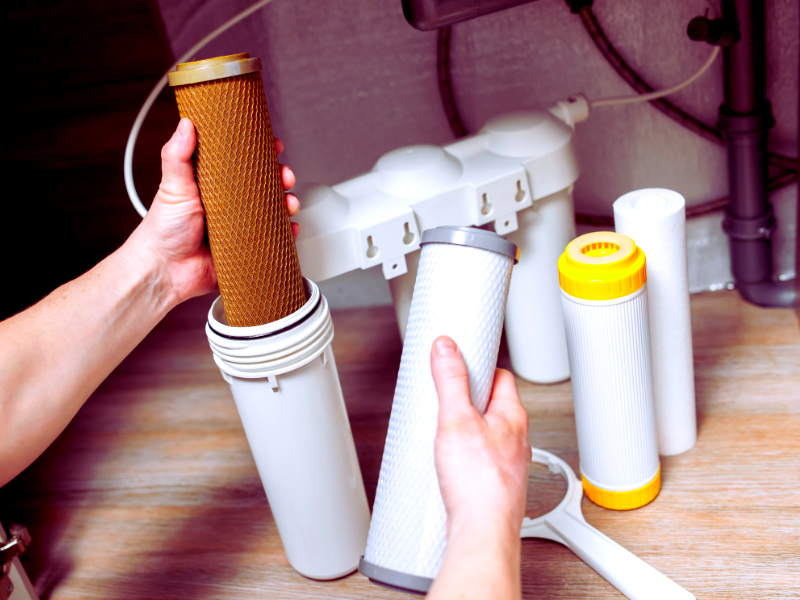
Installing Filter Cartridges
Installing a filter cartridge is typically a straightforward process. Most filter housings are designed for easy cartridge replacement. Simply follow the manufacturer's instructions for installation, ensuring that the cartridge is properly seated and the housing is securely closed.
Maintaining Your Filtration System
Regular maintenance is essential for keeping your water filtration system in top condition. This includes replacing filter cartridges at the recommended intervals, cleaning the filter housing, and checking for any signs of wear or damage.
Troubleshooting Common Issues
If you notice a decrease in water pressure or a change in water quality, it may be time to replace your filter cartridge. Other common issues include leaks or unusual noises from the filtration system. Address these issues promptly to ensure your system continues to provide clean water.
Case Study: Whole House Filtration System
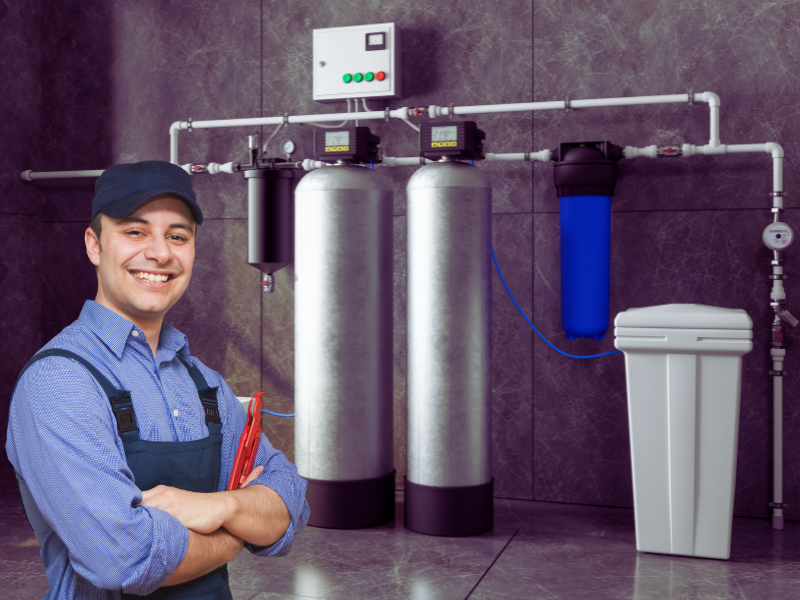
The Smith Family's Experience
The Smith family installed a whole-house filtration system to improve their water quality. They chose a system that included a sediment filter, a carbon block filter, and a reverse osmosis system. This combination effectively removed sediment, chlorine, and other contaminants, providing clean water throughout their home.
Results and Benefits
After installing the filtration system, the Smith family noticed a significant improvement in the taste and clarity of their water. They also experienced fewer issues with clogged plumbing fixtures and appliances. Regular maintenance and timely replacement of filter cartridges ensured the system continued to perform optimally.
Summary
Choosing the right water filter cartridge is super important for keeping your home’s water clean and safe. There are many types of filter cartridges, each designed for specific tasks, like removing dirt, chemicals, or even bad smells from water. Understanding these types can help you pick the best one for your home’s needs. But it doesn’t stop there! To keep your water clean, it’s also important to regularly check and replace your filter cartridges. This will help your water filtration system work properly and give you the best water possible.
Keep up with the latest water filter tips and offers, and subscribe to our newsletter today!
FAQ
What is the difference between a sediment filter and a carbon block filter?
A sediment filter is designed to remove larger particles like sand, silt, and rust from water, while a carbon block filter is used to remove chlorine, volatile organic compounds (VOCs), and other chemical contaminants.
How often should I replace my filter cartridge?
The replacement interval for filter cartridges varies depending on the type of filter and the quality of your water. Most filter cartridges need to be replaced every 3 to 12 months. Always follow the manufacturer's guidelines for replacement.
Can I use multiple types of filter cartridges in my water filtration system?
Yes, many water filtration systems use multiple types of filter cartridges to address different contaminants. For example, a whole house filtration system might include a sediment filter, a carbon block filter, and a reverse osmosis system to provide comprehensive water treatment.
